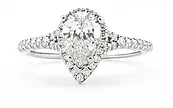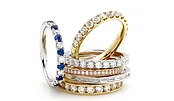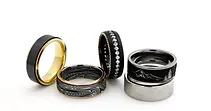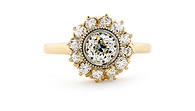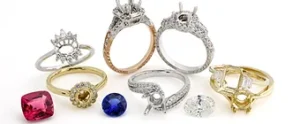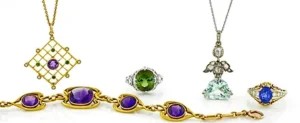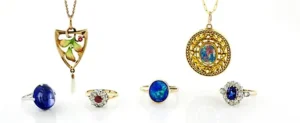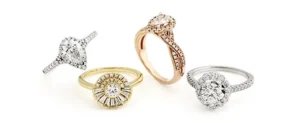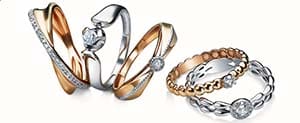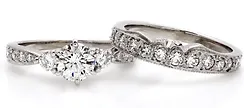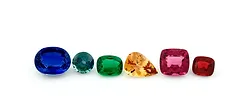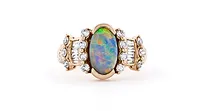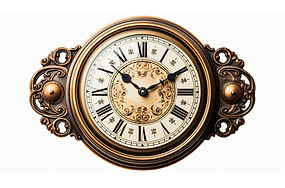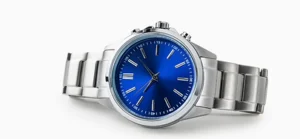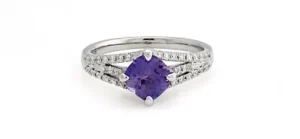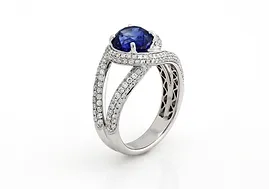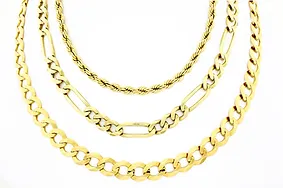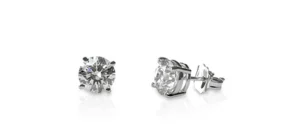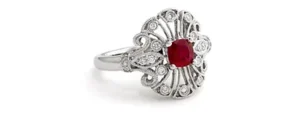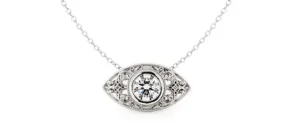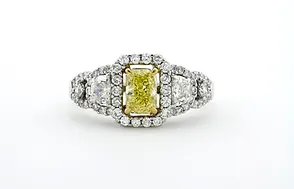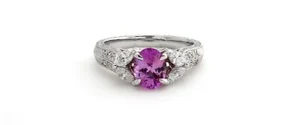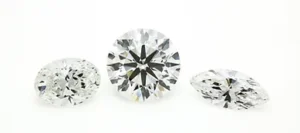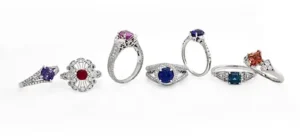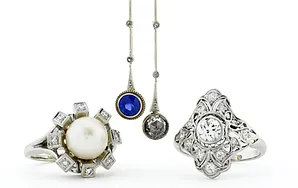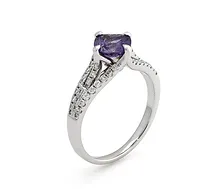Yellow Gold Vintage Engagement Rings
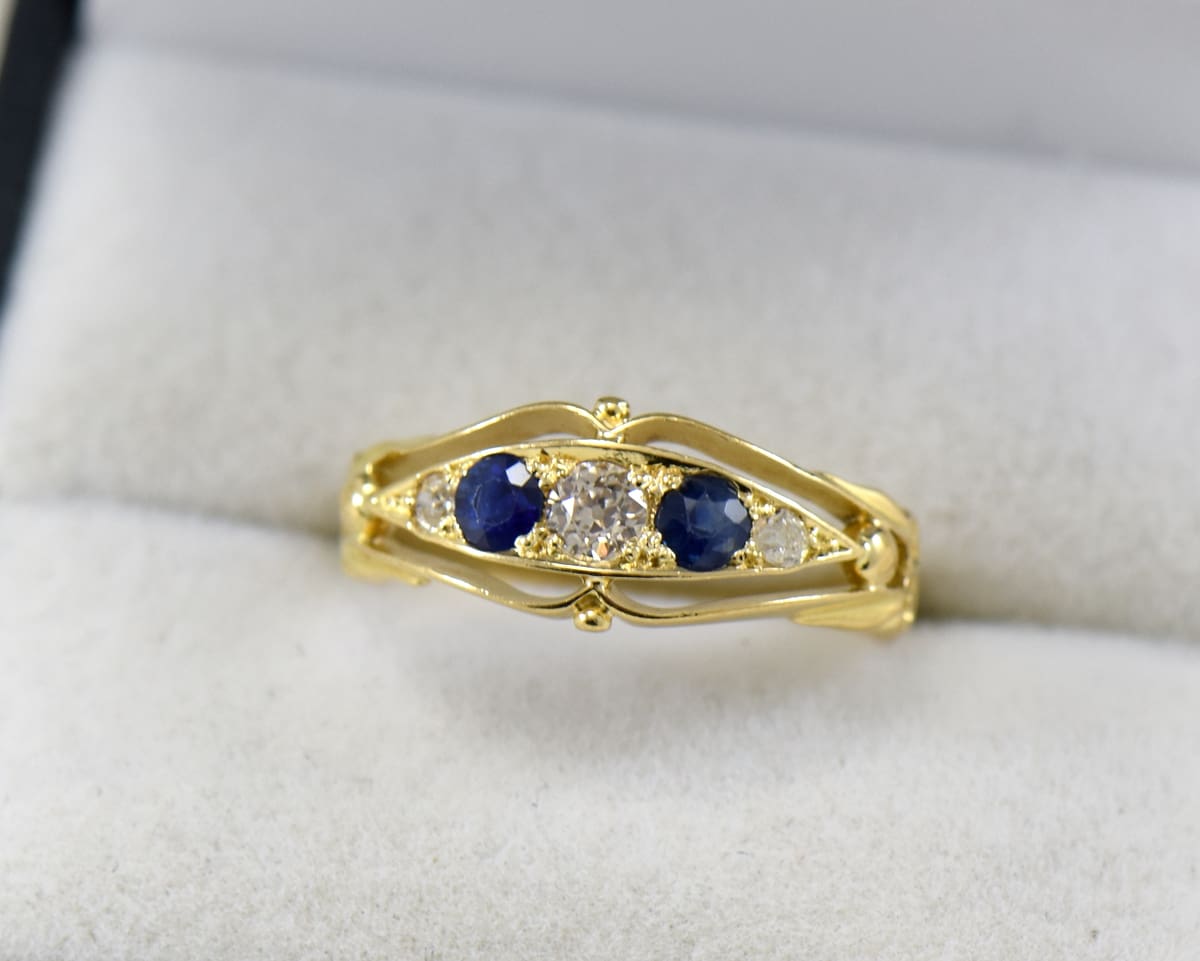
Vintage Engagement Ring with Diamonds and Sapphires in 18k gold
Gold engagement rings are some of the most popular, since yellow gold is considered the “classic” gold color, and has symbolized luxury and wealth for millennia. The earliest known gold rings are crafted in yellow gold, since it wasn’t until the 18th and 19th centuries that technological advancement gave us alloys to change the color, and durability, of gold.
Yellow gold engagement rings have been most popular twice in the past: during the Victorian era and again in the Mid Century years. We see yellow gold engagement rings from every design period, but in those two eras yellow gold was dominant. The fashion of the day was for Diamonds or colored gems to be set in gold settings. We see ornate custom gold rings, like Victorian snake rings- and we also see simple gold bands, and everything in between. Gold rings have been a timeless expression of love and commitment through the ages.
Most vintage engagement rings on the market are American or European in origin, since the concept of an engagement ring is a European tradition. While we see the occasional Asian or South American gold ring with age, they were often crafted in super soft high karat gold (22k or 24k) that prevents them from being worn on a daily basis. Fortunately for us, the master goldsmiths working in Europe developed 18k gold early on, which made the gold more durable. This made it easier to fabricate rings, as it would hold its shape and mount gemstones more securely, but it also makes the rings more durable through the generations. Not every antique ring survives- some get damaged, some are remounted to a new taste, but those that do survive are real treasures that we are honored to offer to the next generation of wearers.
Every country had its own jewelry tradition and method of making gold for jewelry. In Italy and the Middle East, 18k remained the most popular since it was most valued and had the deepest gold color. In Russia and Eastern Europe, even yellow gold has a higher copper content, and often has a rosy hue to the yellow gold, and 14k is often sold as 56 zolotnik gold, which is an antiquated method of measuring gold purity. In Germany and central Europe, 12k gold was more popular, which is exactly half alloy and half gold, which made it easier for the jeweler to make their mix, but it also reduces the gold hue. In England, 15k gold was more popular, since it had a richer yellow hue than 14k but was more durable than 18k. In America, 14k gold became the favored allow late in the 19th century. While these alloys mentioned are the most often seen and most popular, there are a variety of other gold options available. Goldsmithing was as much an art as it was a science, and lower karatage gold was often made to make rings more affordable. We see 8k gold (antiques from Europe) 9k gold (from the UK and Commonwealth countries), 10k gold (frequently sold in North America), 16k gold (used by dentists), 19k gold (the first white gold patent), etc. Even if a piece is marked, we always test it to verify the gold content.
Most clients looking for a vintage yellow gold engagement ring will want an 18k gold ring or a 14k yellow gold ring. We often encourage our clients to compare 14k and 18k gold in person, so they can see the differences in tone against their own skin tone. Some jewelers have predjudice against lower karat alloys like 10k, and to be fair, there are many lower quality items made in 10k. But 10k yellow gold also has merits, especially in mens’ jewelry or for those who are hard on their rings, since 10k is very durable. What is the most durable gold? 10k white gold, to be exact. The alloys used, and high amount of them, make it the most durable for everyday use. 14k has emerged as the happy medium between 10k and 18k, providing beautiful gold color and good durability. Even 18k rings can hold up well over time, depending on the setting style and wearer.
The cost of a Vintage or Antique engagement ring is always being asked about, as well as will a gold ring hold its value? These are two very broad questions. We have vintage gold rings in stock in the $250 range, and in the $25,000 range, priced based on rarity, condition, design, size/quality of stones set in them, and amount of gold present. These same factors impact the value over time.

Edwardian 14k gold ring with platinum top set with old European cut Diamonds.
Vintage engagement rings are hard to find. Many of these rings are worn for a lifetime and are no longer viable for another bride. Thus we either have to restore them, or find them in excellent condition. These are often treasured heirlooms in families, and rarely come on the market. Thus sourcing quality antique gold rings is a challenge, and it can be hard to keep a good selection in stock. We do our best to keep our antique and estate cases brimming with authentic gold wedding bands and engagement rings in a variety of styles and prices, but we also work with recycled gold and can make vintage reproduction rings using antique gold.
We hope you have enjoyed reading this article about Yellow Gold Vintage Engagement Rings. This would be a good time to check out our prices and yellow gold products in our online store.

